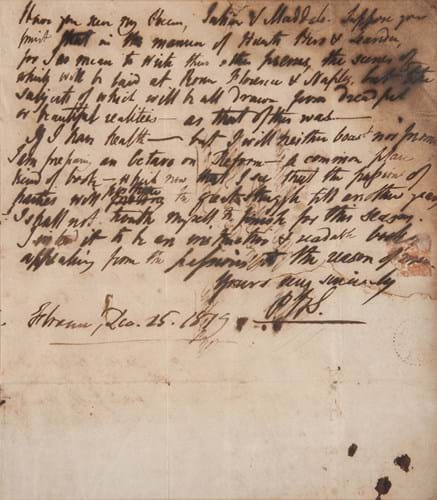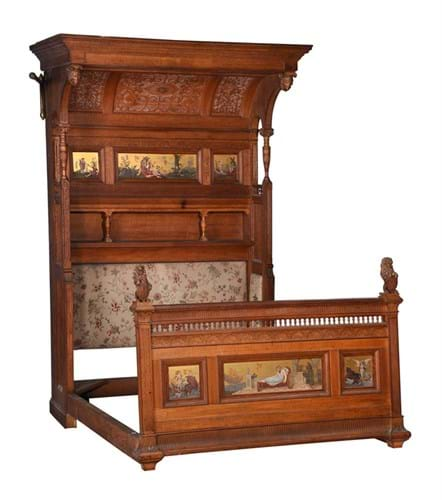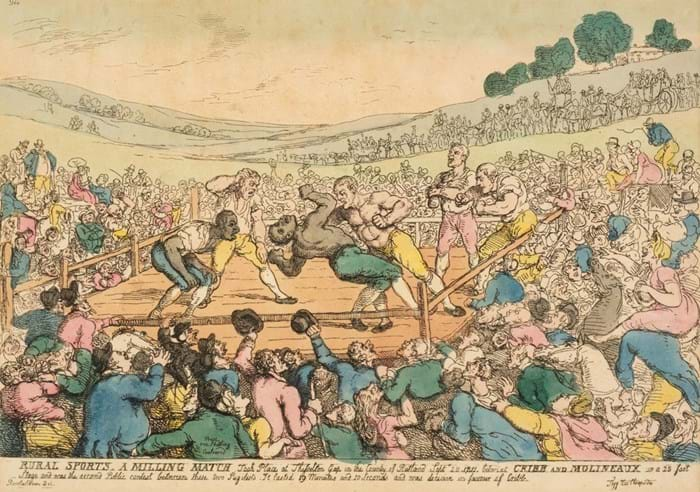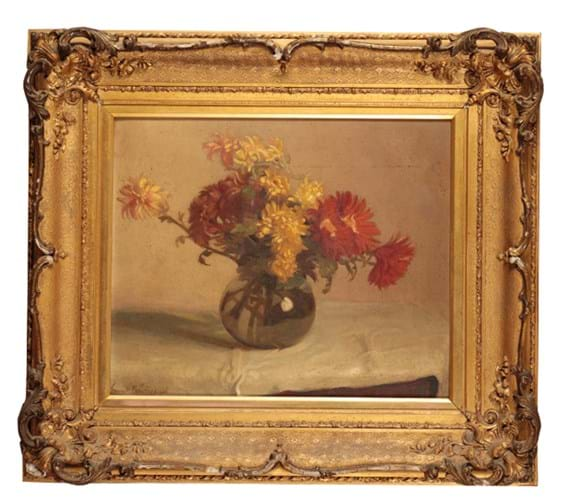1. Aesthetic movement bedroom suite – £48,000
This half-tester bed with its carved heraldic lions and painted and gilt panels is just one part of an extensive bedroom suite made c.1870 by Collier & Pluncknett.
The partnership of James Plucknett and Frederick Collier operated from a showroom in Leamington Spa and workshops in Warwick. The firm advertised in various trade directories between 1872-1880 as ‘...Manufacturers of rich carved furniture in the peculiar styles characteristic of the Gothic, Tudor and Elizabethan ages’ and gained many commissions from well-heeled local families.
Perhaps Collier and Plucknett's best known commission was for Tyntesfield, the celebrated Victorian mansion in Wraxall, North Somerset re-modelled for William Gibbs (1790-1875) that is now owned by the National Trust.
The Aesthetic movement oak suit offered by Dreweatts in Newbury on May 12 was firmly part of the furnishings of Berwick House, Shropshire. In addition to the bed, it comprises a breakfront wardrobe, a breakfront compactum, a washstand with Japonisme tiles, a writing table with glazed superstructure and an overmantel – all with the painted and gilt panels throughout. Several elements carry a brass maker’s label.
The estimate for the full suite of £2000-3000 was certainly on the low side – perhaps the price of just one of the elements. In fact bidding reached a more impressive £48,000.
2. Bare knuckle boxing print – £3200
The famous bare knuckle bout between the English champion boxer Thomas Cribb and African-American Tom Molineaux took place before a crowd of 15,000 at Thisselton Gap, Rutland on September 28, 1811.
Molineaux had fought Cribb before, at Sheninghton Hollow, in Oxfordshire on December 3, 1810, when he was defeated in 35 rounds in a disputed decision. This re-match lasted ‘just’ 19 minutes after Cribb broke his opponent's jaw in the ninth round and knocked him out in the 11th.
The great caricaturist Thomas Rowlandson recorded the fight as part of his celebrated Rural Sports series published by Thomas Tegg in October 1811. Titling the scene Rural Sports A Milling Match, his etching includes both the two pugilists and their entourages.
Cribb’s ‘second’ was John Gully and his bottle-holder Joe Ward while Molineaux's second was Bill ‘The Black Terror’ Richmond (also American-American by birth and once enslaved) and his bottleman Bill Gibbon. Note also the two pickpockets in the foreground – one male and one female – helping themselves from the distracted spectators.
Appealing to a range of collectors, this is perhaps the most desirable of the Rural Sports prints. This framed and glazed copy with contemporary hand colouring was offered by Dominic Winter in South Cerney on May 13 where, estimated at £200-300, it took £3200 from a bidder using thesaleroom.com.
3. Shelley ‘Prometheus’ letter – $22,000

‘Let Prometheus be printed without delay’: an autograph letter from Percy Bysshe Shelley – $22,000 (£15,750) at Hindman.
In this autograph letter by Percy Bysshe Shelley (1792-1822) from Florence, Italy, dated December 15, 1819, the poet writes to his publisher Charles Ollier (1788-1859) about his masterpiece Prometheus Unbound.
“When the box comes, you may write a note to Mr Peacock; or it would be better to call on him, and ask if my tragedy is accepted? If not, publish what you find in the box. I think it will succeed as a publication. Let 'Prometheus' be printed without delay. You will receive the additions, which Mrs S is now transcribing, in a few days. It has already been read to many persons. My Prometheus is the best thing I ever wrote.” He signs it PBS.
Shelley began writing Prometheus in early September 1818, but stopped work on the poem following the death of his daughter Clara later in the month. He resumed the task in early 1819, and had finished the majority of the poem by April. He had the work transcribed in September 1819, and sent the manuscript for the first three acts to Ollier in England in December 1819.
Across three pages, Shelley also references ideas for future projects: “I mean to write three other poems, the scenes of which will be laid at Rome, Florence, and Naples, but the subjects of which will be all drawn from dreadful or beautiful realities... I am [also] preparing an octavo on reform – a commonplace kind of book – which...I shall not trouble myself to finish for this season. I intend it to be an instructive and readable book, appealing from the passions to the reason of men.”
Published as early as 1892, and known to have been sold from the collection of Charles W Fredericton in 1897, this letter was among property entered for sale at Hindmans in Chicago on May 12 by Historic Sengen House, Cornwall-on-Hudson, New York.
Estimated at $3000-4000, the hammer price was $22,000 (£15,750).
4. Ernest Townsend still life – £4000
The Derby artist Ernest Townsend (1880-1944) is best known as a very competent portraitist – he painted Winston Churchill as First Lord of the Admiralty in 1915 – but his oeuvre also includes small still life studies of flowers in the manner of the French painter Henri Fantin-Latour. Several are among the collection of Townsend works held by Derby Art Gallery.
Back in January, Mallams in Abingdon sold a Townsend canvas titled Marsh Marigolds for £3400 – a surprise sum that was thought to be a record for the artist. However, the result was no flash in the pan. Duke’s sale of the contents of Wormington Grange on May 12 included this 40 x 49cm oil of chrysanthemum blooms in a glass vase on a white cloth. It was estimated modestly at £200-300 but sold to a bidder using thesaleroom.com at £4000.
5. ‘The Chronicle of Fortigall’ – £20,000
This rare 16th century manuscript, compiled in Perthshire between 1554-79, is penned in three languages – Latin, Gaelic and Middle Scots.
The 36 quarto page miscellany, known as The Chronicle of Fortigall, is written in a number of different hands by members of the MacGregor family. It contains passages of local and wider history, diary entries, stanzas of poetry, proverbs and aphorisms plus commentaries on religion and belief that betray a consistent Catholic allegiance.
It is closely related to the Book of the Dean of Lismore, considered the most precious surviving Gaelic manuscript of Scottish provenance, and it may be that they were produced by different generations of the family.
Since at least 1855 The Chronicle of Fortigall was among the furnishings of Taymouth Castle where, at the peak of their wealth, power and influence, the Earls of Breadalbane & Holland lived from the early 18th century until 1922.
Edinburgh saleroom Lyon & Turnbull sold 43 lots for the family on May 18 where the manuscript found a buyer at the lower end of a £20,000-30,000 guide.









